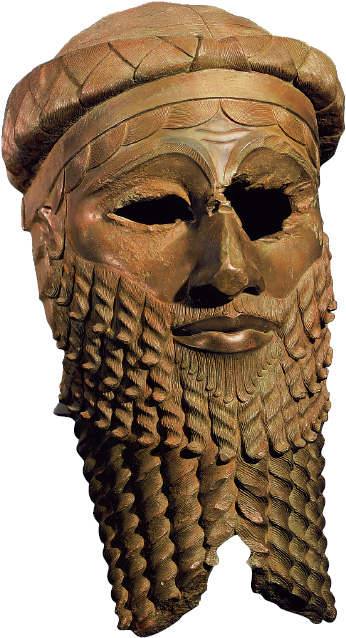A History of Western Society: Printed Page 16
A History of Western Society, Value Edition: Printed Page 16
The Akkadians and the Babylonians

In 2331 B.C.E. Sargon, the king of a city to the north of Sumer, conquered a number of Sumerian cities with what was probably the world’s first permanent army and created a large state. The symbol of his triumph was a new capital, the city of Akkad (AH-kahd). Sargon also expanded the Akkadian empire westward to North Syria, which became the breadbasket of the empire. He encouraged trading networks that brought in goods from as far away as the Indus River and what is now Turkey. Sargon spoke a different language than did the Sumerians, one of the many languages that scholars identify as belonging to the Semitic language family, which includes modern-day Hebrew and Arabic. However, Akkadians adapted cuneiform writing to their own language, and Akkadian became the diplomatic language used over a wide area.
Sargon tore down the defensive walls of Sumerian cities and appointed his own sons as their rulers to help him cement his power. He also appointed his daughter, Enheduana (2285–2250 B.C.E.), as high priestess in the city of Ur. Here she wrote a number of hymns, especially those in praise of the goddess Inanna, becoming the world’s first author to put her name to a literary composition. (See “Primary Source 1.3: Enheduana’s ‘Exaltation of Inanna.’”) For hundreds of years Enheduana’s works were copied on clay tablets, which have been found in several cities in the area, indicating that people may have recited or read them.
Sargon’s dynasty appears to have ruled Mesopotamia for about 150 years, during which time the Tigris and Euphrates Valleys attracted immigrants from many places. Then his empire collapsed, in part because of a period of extended drought, and the various city-states became independent again.
One significant city-state that arose in the wake of the Akkadian empire was settled by the Amorites (AM-uh-rites), who migrated in from the west, probably starting during the time of Sargon’s empire. The Amorites were initially nomadic pastoralists, not agriculturalists, but they began to raise crops when they settled throughout Mesopotamia. One group of Amorites made their home in the city of Babylon along the middle Euphrates, where that river runs close to the Tigris. Positioned to dominate trade on both the Tigris and Euphrates Rivers, the city grew great because of its commercial importance and the sound leadership of a dynasty of Amorite rulers. Like other Amorite kingdoms of the time, Babylon was more than a city-state. It included smaller kingdoms whose rulers recognized the king of Babylon as their overlord.